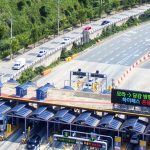SEOUL, South Korea – South Korea is facing an unprecedented healthcare crisis, driven by a controversial government decision that has thrown the medical community into turmoil and left the nation’s hospitals struggling to maintain essential services. At the heart of this crisis is the government’s poorly planned and hastily executed decision to increase medical school admissions by 2,000 students—a move that has been widely criticized as shortsighted and irresponsible.
In an attempt to address the chronic shortage of doctors in rural areas and underserved specialties, the South Korean government announced a plan to increase medical school admissions by 2,000 students. The government justified this decision by pointing to the country’s aging population and low doctor-to-patient ratio, which are expected to place an increasing burden on the healthcare system in the coming decades.
However, this policy, while well-intentioned, was implemented without adequate preparation or consultation with the medical community. Critics argue that the government focused solely on increasing numbers without considering the broader implications of such a drastic increase. The result has been a backlash from doctors, residents, and interns, who see this policy as not only ineffective but also harmful to the quality of healthcare in South Korea.
The announcement was met with immediate and intense opposition from the medical community. Doctors, particularly residents and interns, have been vocal in their criticism, arguing that the policy fails to address the fundamental issues within South Korea’s healthcare system. These include the fee-for-service model that incentivizes doctors to work in urban areas and pursue lucrative specialties, leaving rural areas and essential specialties like pediatrics critically understaffed.
In response to the government’s plan, a significant number of residents and interns have resigned, leading to a severe shortage of medical staff in hospitals across the country. This exodus has had immediate and dire consequences, with hospitals struggling to provide basic care and emergency services.
The mass resignation of medical residents has crippled hospitals nationwide. Emergency rooms, which rely heavily on residents, are among the hardest hit. Patients seeking urgent care are facing longer wait times, and in some cases, are unable to receive timely treatment, leading to tragic outcomes. The shortage of medical staff has also forced hospitals to reduce or suspend critical services, exacerbating the crisis.
In rural areas, where the shortage of doctors was already severe, the situation has become untenable. Many rural clinics have been forced to close, and patients are being referred to urban centers, further straining an already overburdened system.
The government’s handling of the crisis has been widely criticized as irresponsible and out of touch with the realities on the ground. Despite the escalating crisis, the government has largely stuck to its original plan, showing little willingness to engage with the medical community or consider alternative solutions.
Efforts to suppress the strikes, such as deploying military doctors to fill gaps in hospitals and issuing legal threats against striking medical staff, have only deepened the sense of distrust between the government and healthcare professionals. These actions have been seen as heavy-handed and have done little to address the root causes of the crisis.
Public confidence in the government’s ability to manage the healthcare system is rapidly eroding. Citizens are increasingly skeptical of the government’s ability to deliver on its promises, particularly as the crisis continues to worsen with no clear resolution in sight.
Adding to the turmoil, medical school professors across South Korea have begun submitting their resignations in protest of the government’s policies. These professors, who are also senior physicians in major hospitals, argue that the sudden increase in student numbers without corresponding improvements in teaching resources or clinical training opportunities will degrade the quality of medical education.
Since late April 2024, these professors have voiced their frustration with what they see as the government’s unreasonable and unilateral imposition of reforms. Many have pointed out that their resignation could cripple the training of new doctors, exacerbating the already severe shortage of medical professionals in the country. This situation has led to reduced surgical operations and treatment availability, further straining an overstressed healthcare system.
The professors’ move has added another layer to the crisis, as they too face excessive workloads due to the shortage of residents, leading some to consider taking weekly days off in protest. The potential mass resignation of professors threatens to disrupt medical education and delay the graduation of new doctors, which could have severe long-term consequences for South Korea’s healthcare system.
The long-term consequences of the government’s poorly conceived policy are likely to be severe. Experts warn of a potential “lost generation” of doctors, as the sudden increase in medical students without corresponding increases in faculty, infrastructure, or clinical training opportunities could lead to a significant decline in the quality of medical education.
The lack of preparedness for such an influx means that many of these new students may not receive the comprehensive training needed to become competent doctors. This could lead to a generation of undertrained physicians entering the workforce, which would have serious implications for patient safety and the overall quality of care in South Korea.
Moreover, the current crisis is likely to have a chilling effect on future medical students. The prospect of entering a profession marked by government overreach, inadequate support, and deteriorating working conditions may dissuade many from pursuing careers in medicine. This could exacerbate the very shortages the government seeks to address, creating a vicious cycle of declining interest in the medical profession and worsening healthcare outcomes.
The ongoing medical crisis in South Korea highlights the dangers of implementing sweeping policy changes without adequate preparation or consultation with stakeholders. The government’s decision to increase medical school admissions by 2,000 students, while intended to address doctor shortages, has instead exposed the deep flaws in South Korea’s healthcare system.
Moving forward, it is imperative that the government re-evaluates its approach to healthcare reform. Rather than focusing solely on increasing numbers, the government must engage with the medical community to develop comprehensive, sustainable solutions that address the underlying issues. This includes improving working conditions for doctors, revising payment structures to make underserved areas and specialties more attractive, and ensuring that any increase in medical students is matched by corresponding investments in education and training.
Only by adopting a more thoughtful, inclusive approach can South Korea hope to rebuild trust in its healthcare system and ensure that it is capable of meeting the needs of its population now and in the future.



